From the vibrant blue jay to the majestic blue heron, the avian world is home to a stunning array of birds with blue wings.
These feathered beauties not only add a splash of color to our skies but also play important roles in their ecosystems.
Whether you’re a birdwatcher or simply appreciate nature’s splendor, you’ll be amazed by the diversity of 22 different types of birds with blue wings featured in this article
| Image | Name |
|---|---|
 | Eastern Bluebird |
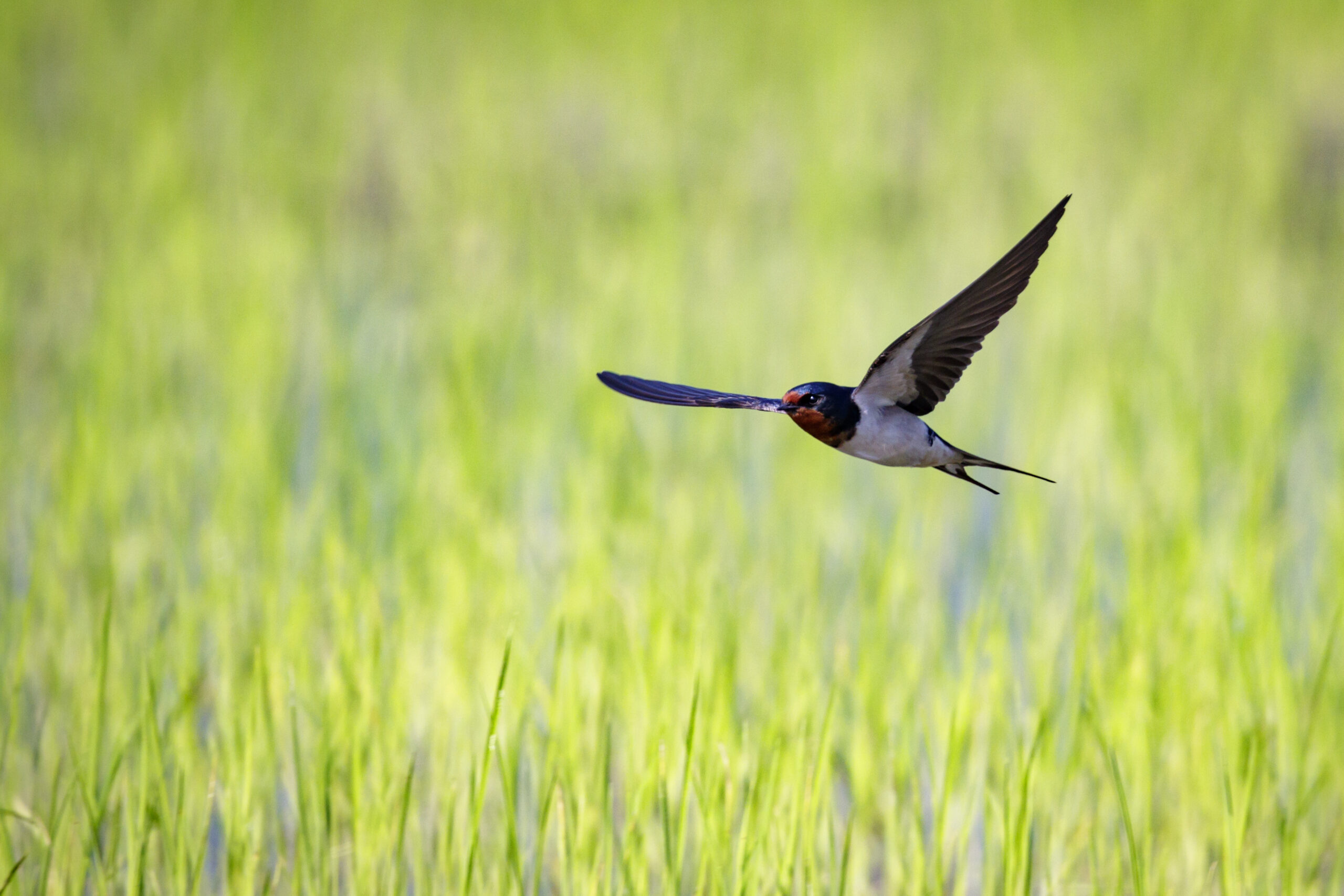 | Masked Barn Swallow |
 | Mountain Bluebird |
 | Blue Jay |
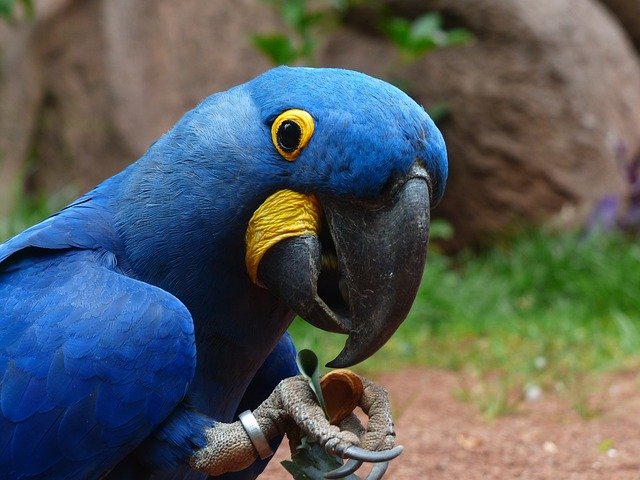 | Blue-And-Yellow Macaws |
 | Blue-And-White Kingfisher |
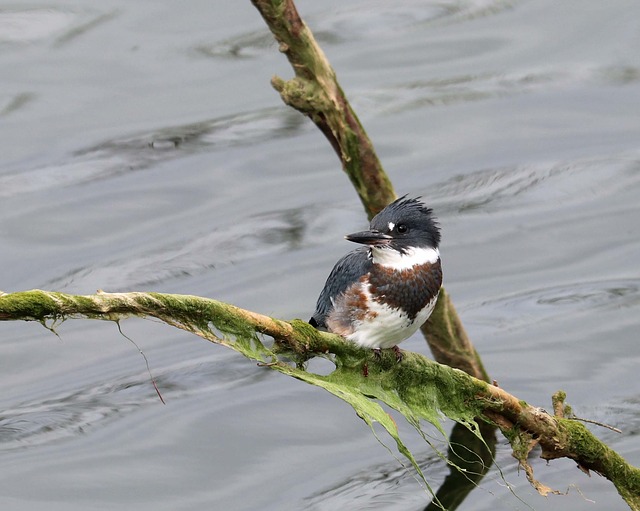 | Belted Kingfisher |
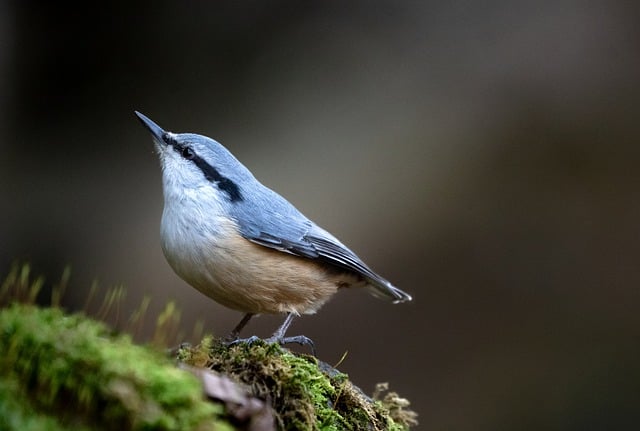 | Indian Roller |
 | White-Breasted Nuthatch |
 | Blue-Winged Kookaburra |
 | California Scrub-Jay |
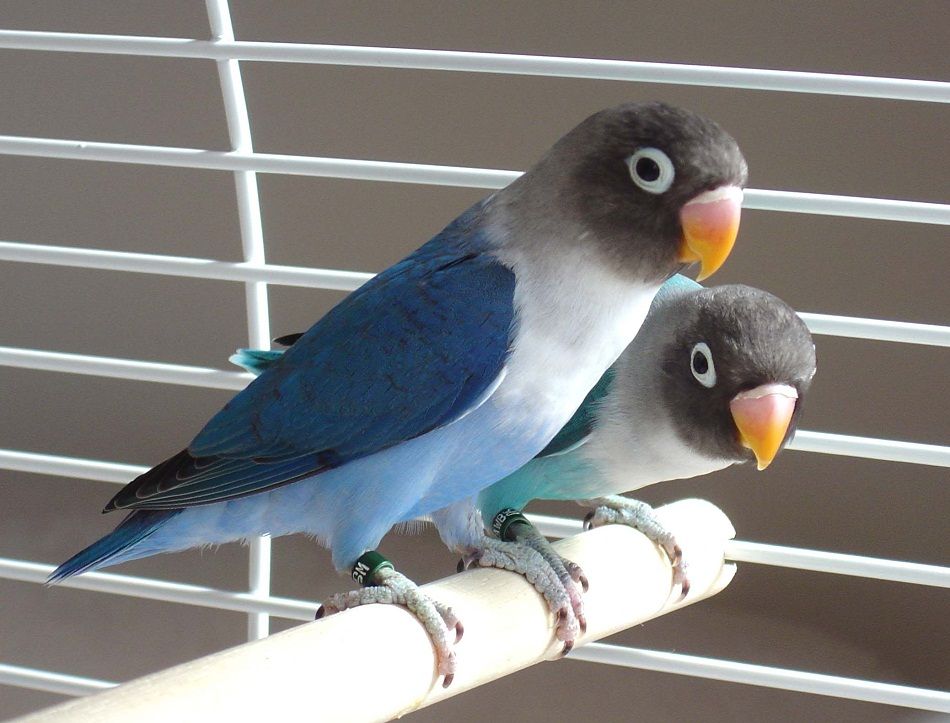 | Masked Lovebird |
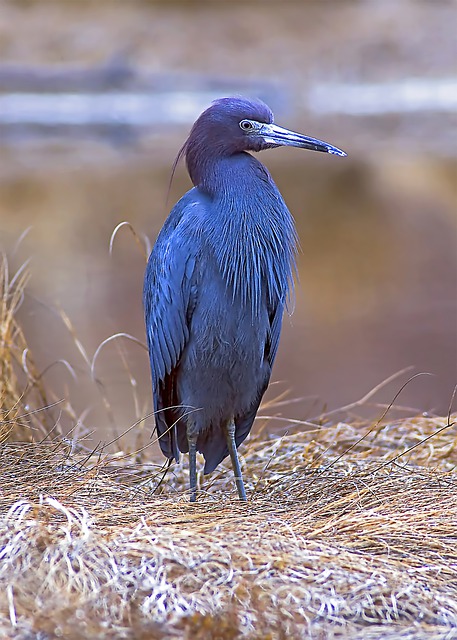 | Little Blue Heron |
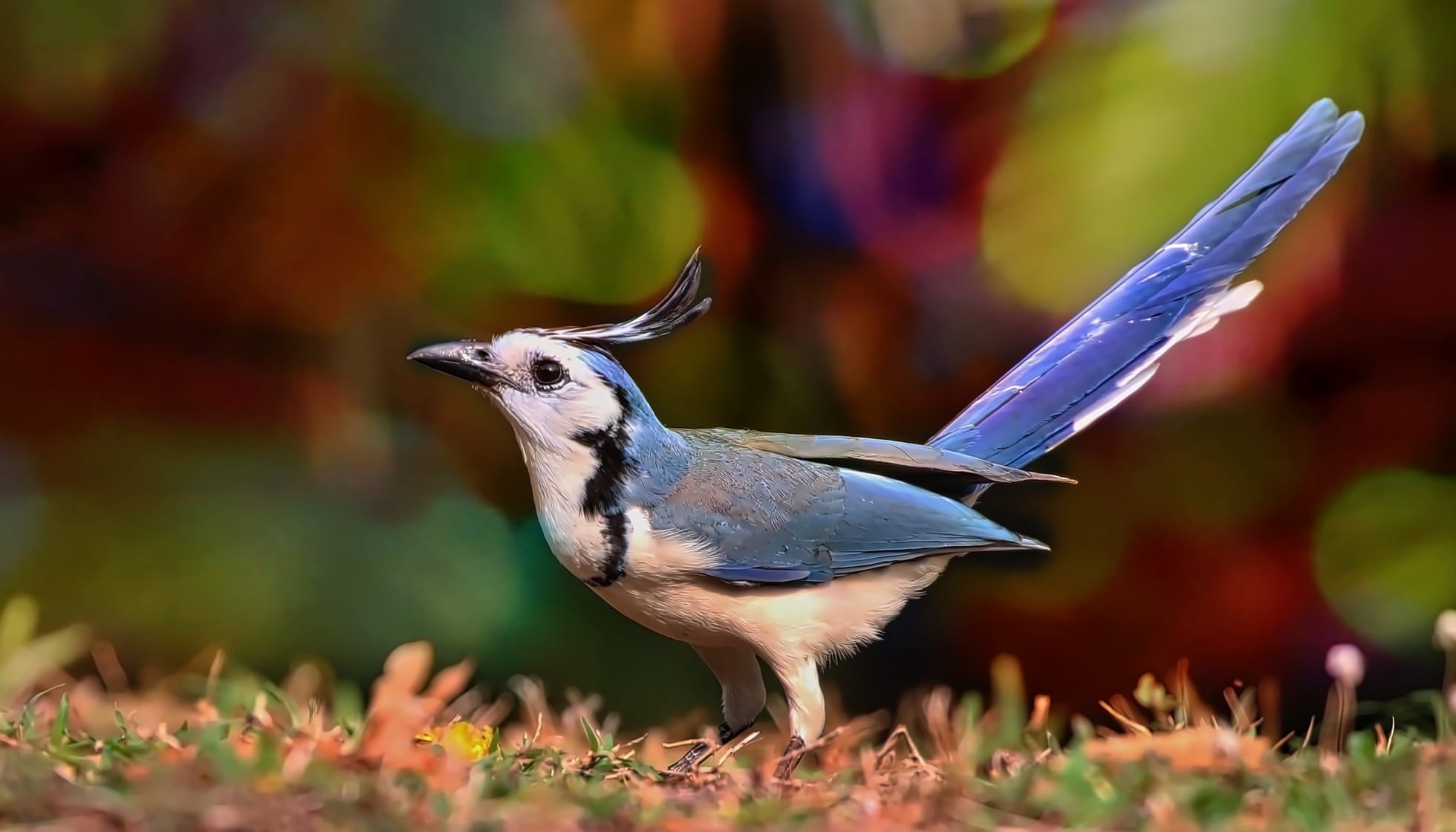 | White-throated Magpie-Jay |
 | Great Blue Heron |
 | Blue-and-white flycatchers |
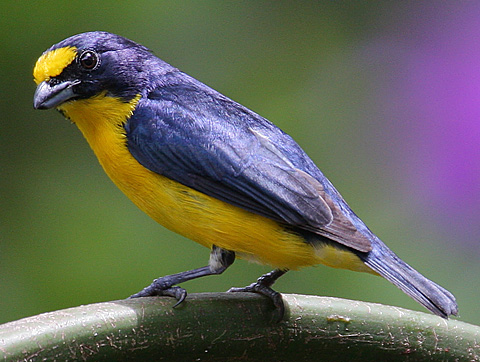 | Yellow-throated Euphonia |
 | Collared Kingfisher |
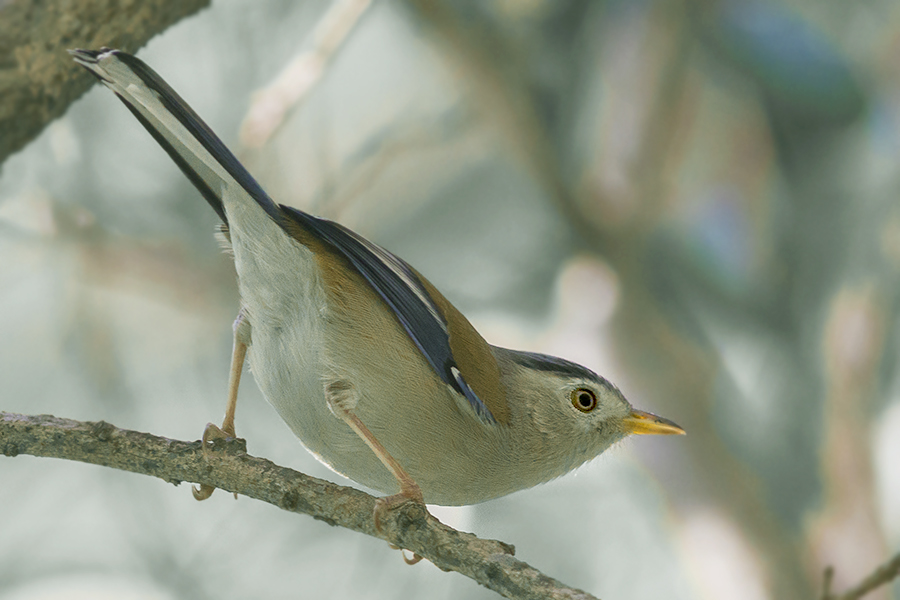 | Blue Winged Minla |
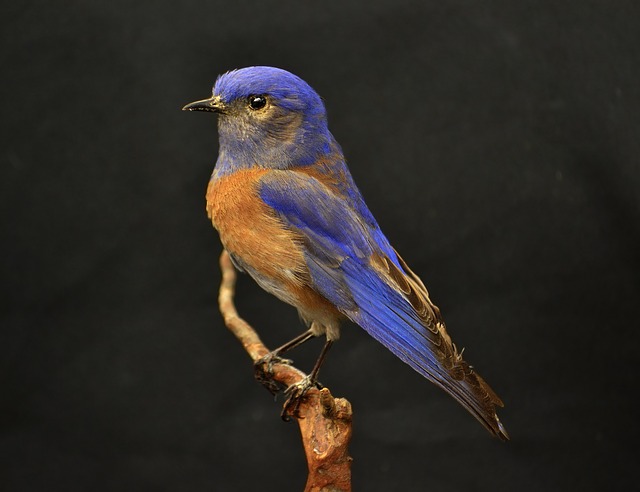 | Western Bluebird |
 | Crimson Rosella |
 | Prothonotary Warbler |
Types of Birds with Blue Wings
1. Eastern Bluebird

A little migratory thrush found in North America, the Eastern Bluebird has a rounded, broad head, huge eyes, and a vigilant stance.
Using binoculars to get a good look at the eastern bluebird is sure to be a rewarding experience.
Male Eastern bluebirds may be identified by their bright royal blue feathers on their wings, backs, and heads, as well as their warm red-brown and white chest feathers.
They are among the most common of the three species of bluebirds and may be spotted in the eastern sections of North America across open areas among farmland, scattered trees, and along roadsides.
It is one of the fourteen magnificent blue birds that may be seen in the state of Pennsylvania.
The eastern bluebird, which is closely related to the mountain bluebird, is also a cavity nester that has a strong preference for nest boxes.
In addition to this, they are exceptionally sociable birds that are able to coexist in flocks with more than one hundred other individuals.
The Eastern Bluebird has a reputation for being very territorial.
A male bluebird will sing more than one thousand songs each hour in an attempt to entice a female.
When it sings, it does so without widely extending its mouth.
These birds are omnivores, although the majority of their diet consists of insects, such as crickets, grasshoppers, caterpillars, and beetles.
They also consume a small amount of fruit.
Both Missouri and New York have designated the Eastern bluebird as their state bird.
2. Masked Barn Swallow
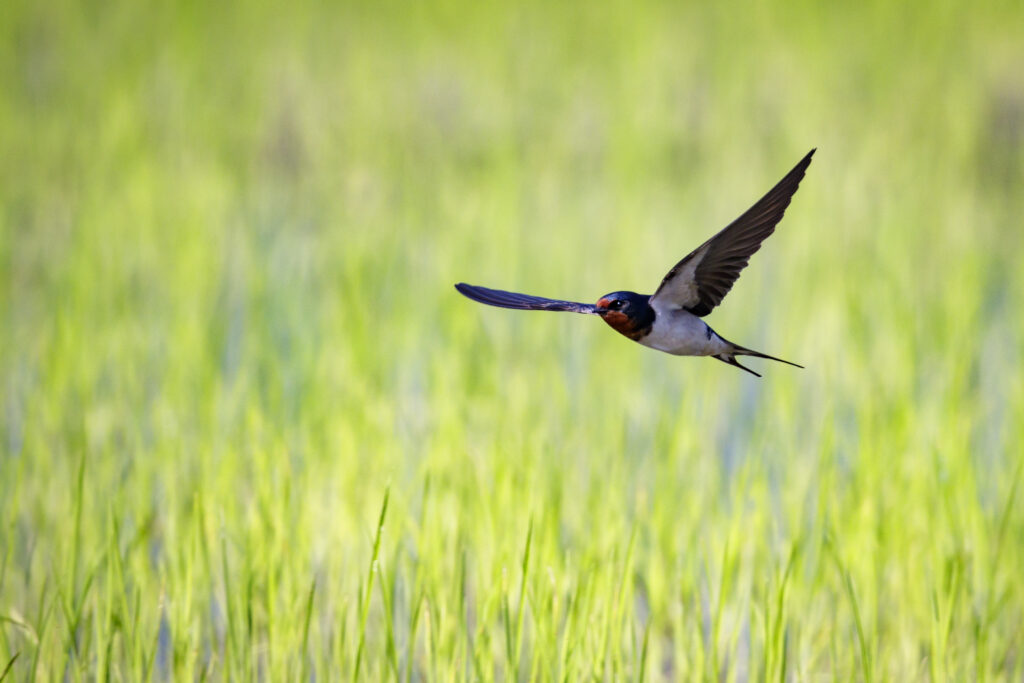
There are several types of swallows, but the barn swallow is among the most common.
Its upper body and wings are blue, while its forehead and neck are orange and its upper and lower bodies are a lighter shade of orange.
The long, thin, and highly forked tails of barn swallows are easily recognizable characteristics of this species.
The female has a smaller forked tail than the male, but otherwise, the two sexes seem identical.
The Barn Swallow is said to have gotten its forked tail since it stole fire from the gods and gave it to humanity.
The gods took this as an affront and tossed a firebrand at the swallow, setting fire to the feathers in the center of its tail.
The barn swallow is a big bird that may be spotted in the states of Pennsylvania and Maryland.
This long-distance migrant leaves its North American breeding sites in early October to spend the winter across South or Central America.
Barn swallows are insectivores, meaning they consume flying insects.
3. Mountain Bluebird

The mountain bluebird is a kind of tiny thrush that travels in flocks.
It is simple to identify since it has a spherical head and a beak that is straight and slender.
The Mountain Bluebird is native to the hilly regions of the western part of the continent of North America.
The feathers of males are a brilliant, dazzling sky blue in color. While the tail and wings are a deeper shade of blue, the underside of the wings and underside of the tail are white.
This bird, which is blue and white in color, is the official symbol of both Idaho and Nevada.
The mountain bluebird species is an omnivore that consumes a variety of foods, including tiny fruits, spiders, grasshoppers, flies, and other types of insects.
It is estimated by professionals in the field of wildlife that there are approximately 4.6 million mountain bluebirds in existence today.
It is a second hole nester, which means that it constructs its nest in pre-existing holes in trees or holes made by other species of woodpeckers.
The males are the ones who search for potential nesting sites, while the females seem to be the individuals that make the ultimate choice.
This is due to the fact that the females are often the ones responsible for building the nest.
Additionally, Northern California is home to these feathered friends.
4. Blue Jay
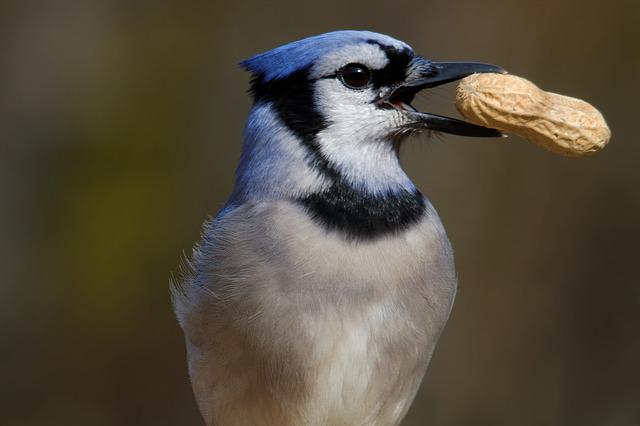
A huge songbird that may be found across the majority of the central and eastern United States is called a blue jay.
Its upper feathers are a combination of black, blue, and white, while its underside is either white or a light grey color.
The blue jay has iridescent blue wings that are speckled with white.
Both males and females have the same appearance.
The blue jay isn’t the official state bird of any one of the states in the United States; nonetheless, it is used as the team mascot for the Toronto Blue Jays, who compete in Major League Baseball.
They are very clever birds who are able to utilize tools, mimic the noises of other animals that threaten them, and have a passion for making noise.
Blue jays are monogamous throughout their whole lives and cooperate together to construct a nest for their young.
The male will provide food and care for the female while she is sitting on the eggs that he has laid.
The blue jay is an omnivore that primarily consumes seeds but will also eat nuts, berries, and even the rare bug.
5. Blue-And-Yellow Macaws

Large birds native to South America, blue-and-yellow macaws have yellow beaks and blue wings.
It is also possible to refer to them as the blue-and-gold macaws.
These large birds are difficult to overlook due to the stunning turquoise blue that covers their bodies, the green that covers their foreheads, and the dark lemon-yellow that covers their chests.
The blue-and-yellow macaw is a typical option for those looking for a pet due to the fact that it has a striking coloration, is capable of talking, is readily available in the market, and forms deep bonds with people.
Bear in mind that these parrots may live for a very long time—up to 70 years or even longer—in the event that you choose to obtain one.
Macaws practice monogamy and stay with the same partner for their whole lives.
When in the air, mated birds will fly in close proximity to one another, with their wings coming very close to touching.
They like eating seeds in the wild, and as a result, macaws will scatter a lot of seeds, which is beneficial to the development of the surrounding forest.
6. Blue-And-White Kingfisher
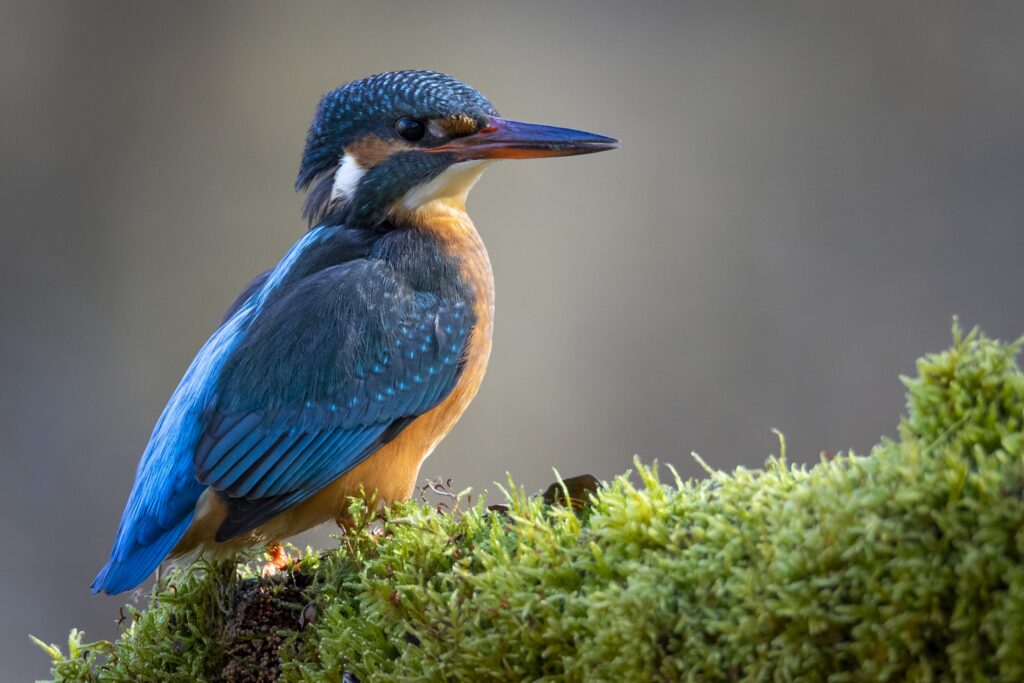
The blue-and-white kingfisher is a species of kingfisher that is characterized by its beautiful azure-blue wings and the remainder of its upper parts, as well as its brilliantly white underparts.
It resides in the subtropical and tropical mangrove rainforests of Indonesia, which are its native habitat.
It is an insectivore that mostly consumes grasshoppers as its food of choice.
7. Belted Kingfisher

The belted kingfisher is a species of water kingfisher that is endemic across North America.
It is a huge and noticeable bird.
It has a huge head, a crest that is hairy on the top and rear of the head, and perhaps a beak that is straight, broad, and pointy.
The underparts are white, whereas the top parts have a bluish-gray coloration.
Male Belted Kingfishers are quite territorial, and they will often drive away any intruders who come into their territory.
When searching for belted kingfishers, the best places to look are in streams, lakes, bays, and along the shore.
Listen for the peculiar and loud chattering or rattling sounds that they make.
Most of the time, you will hear them before you actually notice them.
These blue-winged birds possess two toes on each foot that are fused together, which is another way to tell them apart from other species.
They are carnivores and use their strong beaks to dive for fish and crayfish, which they then consume.
In addition to that, they will consume amphibians, mollusks, crabs, and lizards.
In a manner similar to that of owls, belted kingfishers are unable to digest bone and must instead vomit the undigested fragments as pellets.
8. Indian Roller

The wings, tail, and underside of this brilliantly colored bird are all tinted in varying colors of blue.
The Indian roller is a bird that has successfully adapted to human-altered environments and may often be spotted resting in the branches of wayside trees or on wires.
The species is well-known for the brilliantly vivid sky-blue color of its wings, as well as the aerobatic displays that males conduct during the mating season.
As a result of its steep and undulating flying, somersaulting, nose-diving, hovering, and lateral rolling, the species was given its name.
Indian rollers are known to be territorial birds and will monitor their territories by soaring among the treetops.
As soon as they detect an intruder, they can immediately begin a high-speed pursuit in order to drive it away.
These birds aren’t known for their outgoing nature and would rather spend their time alone or in couples.
Indian rollers practice lifelong monogamy with their partners.
The Indian roller seems to be the official state bird of many states across India, including Odisha, Telangana, and Karnataka.
9. White-Breasted Nuthatch

These particular nuthatches are the biggest ones seen across North America.
White-breasted nuthatches are clean-looking birds that have blue-gray and white feathers on their bodies.
They are medium size birds.
The only discernible difference between the male and female is the fact that the female is lighter in color.
The male and females have fairly similar appearances.
These eccentric and boisterous birds earned their name from the method by which they open seeds: they might jam their seeds and nuts into the bark of trees and then use their beaks to beat the tree bark in order to open the seeds.
White-breasted nuthatches are frequent blue birds that are spotted across Maryland.
They may also be located in woods and open areas across the majority of the United States, as well as portions of Mexico and Canada.
They are omnivores and consume both insects and seeds for food.
10. Blue-Winged Kookaburra

This fairly big bird inhabits the farm fields, open forests, and paperbark swamps of southern New Guinea and northern Australia.
It may be found in both subtropical and tropical environments.
The blue-winged kookaburra does have a white head featuring brown lines, a white neck and underparts, and bright blue wings.
In addition, it is simple to recognize this bird due to its square, large head, long beak, and very pale eyes.
This bird is well-known for its favorite pastime, which is the hunting of snakes.
The blue-winged kookaburra might seize the reptile by the back of the head and then slam it against a limb or a rock.
They produce eggs that are pearly white and gleaming, and blue-winged kookaburra chicks have been known to murder their younger siblings within the first week of their lives, often in a very violent manner.
11. California Scrub-Jay

Attractive jays can be seen in parks, neighborhoods, and riverfront woodlands in the areas close to the Pacific Coast of California scrub-jays may be spotted.
These birds are of modest size and also have wings that are a deep blue color, while their underparts are white and a soft gray-brown color.
Scrub jays from California are frequently found in the company of other species, and they have been seen perched on the backs of mule deer as they consume ticks and other types of parasites.
In addition, it is not uncommon to witness California scrub jays taking acorns from acorn woodpeckers or even other jays.
Before attempting to conceal their own acorn, California scrub jays would first make sure there are no other jays looking in their direction.
They are omnivores, meaning that in addition to eating seeds, fruit, insects, nuts, and even certain small animals like nesting birds and lizards, they consume these foods as well.
The California scrub-jay is another bird that is often seen in Southern California.
They also possess what is known as a supercilium, which is a narrow line that runs over their eyes.
Find out more regarding the “eyebrows” that this bird, along with many others, has by reading this page.
12. Masked Lovebird

Lovebirds with yellow collars, often known as disguised lovebirds, are another kind of bird that is easily recognizable because of its blue wings.
This kind of parrot may be found in a variety of hues.
The lovebird with the blue mask possesses black feathers covering its face, a white neck, a pink beak, and dark blue feathers covering its wings, body, tail, and rear.
This beautiful lovebird is native to the East African savanna, although it may also be spotted in cultivated regions, woods, and in the vicinity of human settlements.
Masked lovebirds are monogamous throughout their whole lives, and males and females have extremely similar appearances.
When the time comes for mating, the males grow more anxious, while the females begin to construct nests in which they will raise their offspring.
During this period, both parties have an increase in hunger; the males will bring food, feed their companion, and maybe preen each other.
13. Little Blue Heron

This little heron is a bird that lives in the Gulf states in the United States and may grow up to be a medium-sized bird.
Little blue herons may be spotted in the marshes and estuaries of the Southeast, where their coloring ranges from light blues to deep purples.
There is no discernible difference between the sexes, and youngsters are entirely white throughout their first year.
The row of “teeth” that runs down the middle toes of little blue herons is used by the birds to scratch the back of their heads, as well as their throats and necks.
They act in large flocks, and their nests are frequently located near those of other egrets, herons, and wading bird species.
Typically, solitary hunters, little blue herons, locate and ambush their prey in shallow water using a deliberate approach.
They are carnivores and will consume things like small rodents, spiders, snakes, frogs, crabs, fish, lizards, turtles, and insects for food.
14. White-throated Magpie-Jay
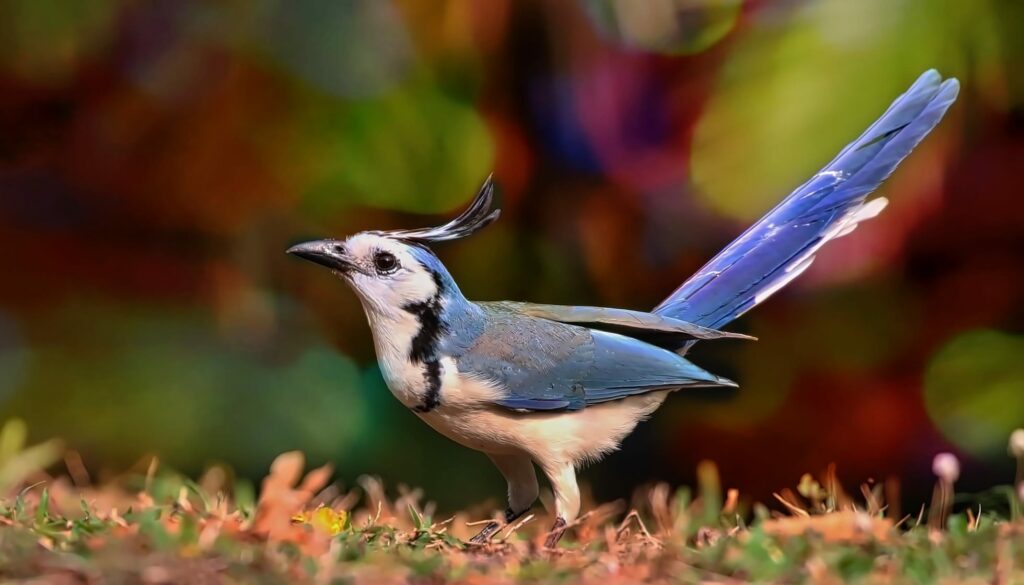
The White-throated Magpie-Jay is a huge bird with a loud voice and a highly social personality.
Search for it in sites that have a combination of woods and meadows, in the vicinity of areas that have been cultivated, and along the borders of forests.
The abdomen, chests, and undersides of white-throated magpie jays appear white, whereas the rest of their bodies, including their mantles, wings, and tails, are a brilliant blue color.
These birds are instances of blue and white birds.
They are omnivores; however, the majority of their diet consists of tiny fruits and caterpillars.
The fact that these magpie-Jays are so large, active, attractive, and vocal is likely to catch your notice and alert you to the fact that they are around.
15. Great Blue Heron

The Great Blue Heron is the biggest species of heron that can be found in North America.
It is simple to recognize this bird due to its wide orange-yellow beak, its short black feathers on its forehead, and the design of black and brown on its wings.
This huge bird’s wings have a coloration that is between blue and grey.
It is particularly widespread in wetland areas and close to the coasts of open bodies of water.
This bird would maintain its neck in an S-shape while it is in flight, and its legs would be trailing behind this one.
The great blue heron is capable of reaching speeds of approximately 30 miles per hour, despite its bulky construction and massive size.
Before mating, it engages in several unusual wooing behaviors, such as locking and rubbing its beak on the plumage of the other bird; however, it only remains monogamous for a single season.
The eggs will be incubated by both of the parents, taking turns, and after they have hatched, the young birds will be able to take flight at just two months of age.
Heronries are the collective noun for the nesting areas of great blue herons, and these areas may often include more than 400 nests.
Carnivorous by nature, great blue herons consume a wide variety of prey, including small mammals, invertebrates, reptiles, amphibians, fish, and even other species of birds.
These birds will approach their food cautiously in shallow waters before suddenly swooping down on them with blinding speed and seizing them using their long, pointed beaks.
Among the 13 largest species of birds that may be spotted across Ohio is the great blue heron.
16. Blue-and-white Flycatchers

Blue-and-white flycatchers are stunning songbirds that have black faces, necks, and chests, in addition to their stunning royal blue wings and white abdomen.
They inhabit woody places across Asia’s lowlands, as well as submontane parkland, woods, and gardens.
Breeding grounds for the blue-and-white flycatcher may be found in Korea, Japan, and even certain regions of Russia and China.
They are very territorial birds that are known for their high levels of activity.
Omnivorous in their diet, blue-and-white flycatchers consume berries, as well as the larvae of other insects and other animals, such as bees, beetles, and moths.
17. Yellow-throated Euphonia

A little songbird known as the Euphonia may be spotted in the southeast of Mexico and all over Central America.
It has a small beak, a short tail, and short, pointy, blue wings that are shiny.
Males possess blue-black heads having yellow forecrowns and brilliant yellow rump, while females have blue-black faces with yellow forecrowns.
The upper portions of a female are olive greenish, while the bottom sections are more of a whitish-gray color.
The name of the species originates from a Latin term that may be translated as “pleasant sound.”
Fruits and berries are the primary sources of nutrition for the Yellow-throated Euphonia, which is a herbivore.
It has a digestive tract that has been modified specifically for the consumption of the deadly mistletoe berries that it adores.
18. Collared Kingfisher

There are a few other names for the collared kingfisher, including the mangrove kingfisher and the white-collared kingfisher.
This kingfisher is simple to spot since it has a huge beak that resembles a kookaburra and is black in color.
It also has turquoise wings and a head, a white neck, and white plumage on its breast. The feet are dark in color.
The skin of men typically has a little more bluish color, while the skin of females typically has a slightly deeper green color.
These birds are quite conscientious about maintaining their personal cleanliness, and they often bathe themselves by diving headfirst into the adjacent lakes and rivers.
After that, they are able to be observed drying their plumage in the direct sunshine while also preening them.
Carnivorous in their diet, collared kingfishers consume prey items such as insects, crabs, tiny snakes, small birds, small fish, and even mice.
19. Blue Winged Minla

The blue-winged minla is a vibrantly colored bird that inhabits the woodland and foothill woodlands of Southeast Asia as well as the Indian subcontinent, where it is also known by the name blue-winged Siva.
Males and females appear identical. The majority of their bodies are a powdered gray-blue color, and they have blue accents on their wings and tails.
Their heads and faces are a silky gray-brown color.
Blue-winged minlas are social birds that often travel in groups of five to twenty individuals.
Insects, seeds, and berries make up the majority of their diet.
20. Western Bluebird

The little thrushes that are native to North America often perch in an erect position.
Western bluebirds have wings that are dark blue, their breasts and sides are orange, their bellies are grey, and their bills are narrow and straight.
Male western bluebirds will emit loud sounds that may be described as “cheering,” “churr-churning,” and “chupping” in order to drive away potential rivals and locate females in the deep forest.
The coloration of the neck of Western bluebirds allows them to be identified from the other two kinds of bluebirds.
Mountain bluebirds are the only species of a bluebird that do not have any orange color on their bodies, whereas western bluebirds possess blue (male) or grey (female) necks and eastern bluebirds possess orange necks.
Search for them in wooded areas and the boundaries of wooded areas. Pay particular attention to the birds that dive down to the ground in an instant in pursuit of insects.
Berries are another important food source for western bluebirds.
The Western Bluebird and its partner stay together for life. However, research conducted in 2003 found that approximately 46% of western bluebird females had babies in their nests that were not fathered by their social partners.
This information was gleaned through observations of western bluebird nests.
21. Crimson Rosella

This species of parrot is indigenous to the eastern and southeastern regions of Australia, and its natural habitats include open woodlands and woods, as well as parks and gardens.
The crimson rosella is a bird of medium size that has light grey beaks, dark brown irises, and general red feathers. Its wings have a beautiful blue color.
The red rosella has a total of seven different subspecies.
These birds have a tendency to draw attention to themselves and make a lot of noise, particularly while they are feeding.
The crimson rosella consumes mostly plant matter, including nuts, seeds, fruits, and berries, as well as some insects and the larvae of other insects.
They are unable to communicate verbally like macaws, but they are able to imitate whistles and melodies.
22. Prothonotary Warbler

This little songbird is distinguished by its blue-gray wings, yellow underparts, long, pointy beak, olive-colored rear, and black feet.
The breeding grounds of the Prothonotary Warbler are the marshes of the eastern United States.
The West Indies, Central, and South America are where this bird spends the winter.
The Prothonotary Warbler, sometimes known as the “golden swamp warbler,” gets its name from the vivid yellow robes that Byzantine notaries wore.
Brood parasitism is a common practice among blue-winged birds, in which females of the species hatch eggs in the nests of many other members of the species.
Conclusion
The following is the last entry on our list of blue-winged birds. Ample instances may be found.
The eastern and western bluebirds, as well as the yellow-throated Euphonia, are relatively tiny species, whereas the blue jay and the blue-and-yellow macaw are among the largest of the birds we know.
You ought to be able to identify each of these birds with relative ease the next time you encounter one in the wild.
FAQ
What types of birds have blue wings?
Some examples of birds with blue wings include the Blue Jay, the Bluebird, and the Blue-winged Teal.
Are there any birds with entirely blue wings?
Some birds, such as the Blue Jay and the Bluebird, have primarily blue wings with some other colors mixed in. However, there are no birds that have entirely blue wings.
Where can I find birds with blue wings?
Birds with blue wings can be found in a variety of different habitats, depending on the specific species. For example, Blue Jays are common in wooded areas of North America, while Blue-winged Teals can be found in wetlands and marshes.
Is the color of a bird's wings always an indicator of its species?
The color of a bird’s wings can be a helpful identifying feature, but it is not always a reliable indicator of its species. Other characteristics, such as size, shape, and pattern, should also be taken into account when trying to identify a bird.
Are blue-winged birds only found in North America?
No, blue-winged birds can be found in different parts of the world. For example, the Blue-winged Pitta is found in Southeast Asia.
Last Updated on March 22, 2023 by Lily Aldrin
